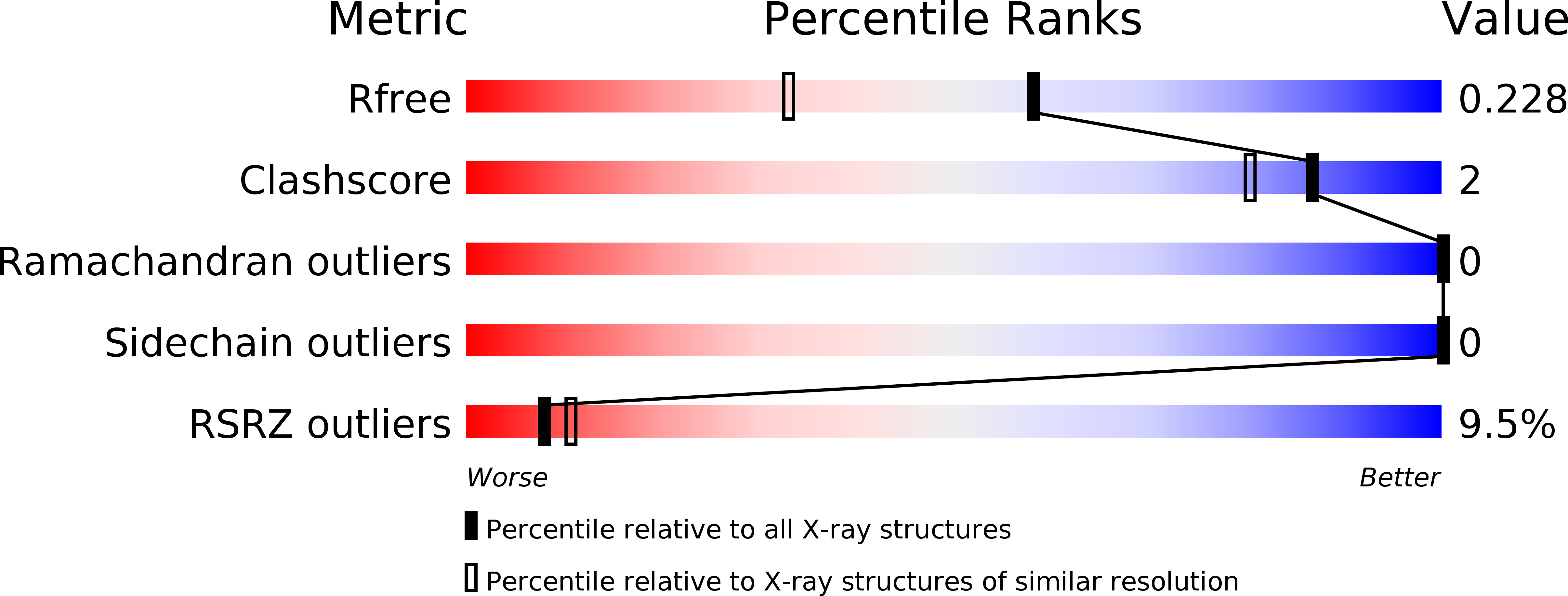Structural Basis for Inhibitor-Induced Aggregation of HIV Integrase.
Gupta, K., Turkki, V., Sherrill-Mix, S., Hwang, Y., Eilers, G., Taylor, L., McDanal, C., Wang, P., Temelkoff, D., Nolte, R.T., Velthuisen, E., Jeffrey, J., Van Duyne, G.D., Bushman, F.D.(2016) PLoS Biol 14: e1002584-e1002584
- PubMed: 27935939
- DOI: https://doi.org/10.1371/journal.pbio.1002584
- Primary Citation of Related Structures:
5HOT, 5HRN, 5HRP, 5HRR, 5HRS - PubMed Abstract:
The allosteric inhibitors of integrase (termed ALLINIs) interfere with HIV replication by binding to the viral-encoded integrase (IN) protein. Surprisingly, ALLINIs interfere not with DNA integration but with viral particle assembly late during HIV replication. To investigate the ALLINI inhibitory mechanism, we crystallized full-length HIV-1 IN bound to the ALLINI GSK1264 and determined the structure of the complex at 4.4 Å resolution. The structure shows GSK1264 buried between the IN C-terminal domain (CTD) and the catalytic core domain. In the crystal lattice, the interacting domains are contributed by two different dimers so that IN forms an open polymer mediated by inhibitor-bridged contacts; the N-terminal domains do not participate and are structurally disordered. Engineered amino acid substitutions at the inhibitor interface blocked ALLINI-induced multimerization. HIV escape mutants with reduced sensitivity to ALLINIs commonly altered amino acids at or near the inhibitor-bound interface, and these substitutions also diminished IN multimerization. We propose that ALLINIs inhibit particle assembly by stimulating inappropriate polymerization of IN via interactions between the catalytic core domain and the CTD and that understanding the interface involved offers new routes to inhibitor optimization.
Organizational Affiliation:
Department of Biochemistry and Biophysics, Perelman School of Medicine, University of Pennsylvania, Philadelphia, Pennsylvania, United States of America.


















